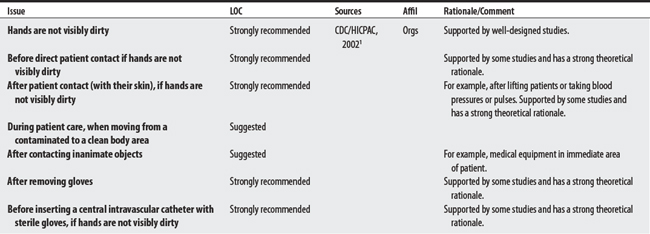Chapter 10 Infection Control
10.1 Guidelines for Hand Hygiene in Health-Care Settings
The Centers for Disease Control (CDC), Health Care Infection Control Practice Advisory Committee (HICPAC), Society for Healthcare Epidemiology of America (SHEA), Infectious Disease Society of America (DSA), and Association for Professionals in Infection Control (APIC) have made 2002 Hand Hygiene recommendations for the use of soap and water and alcohol-based rubs in the health care center.1 Proper hand hygiene can help prevent the spread of antimicrobial-resistant infections, whereas poor hand hygiene may be a contributing factor in patient mortality. Compliance for hand hygiene is noted to be problematic among health care workers.2










